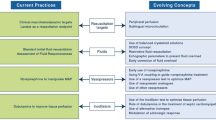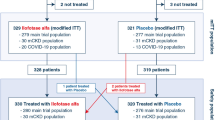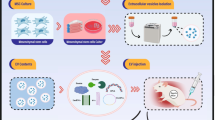Abstract
Objective
To evaluate the protective effects of Astragaloside IV (AST) in a rat model of myocardial injury induced by cecal ligation and puncture (CLP).
Methods
The model of sepsis-induced cardiac dysfunction was induced by CLP. Using a random number table, 50 specific pathogen free grade of Sprague Dawley rats were randomized into 5 groups: the sham group (sham), the model group (CLP, 18 h/72 h) and AST group (18 h/72 h). Except the sham group, the rats in other groups received CLP surgery to induce sepsis. CLP groups received intragastric administration with normal saline after CLP. AST groups received intragastric administration with AST solution (40 mg/kg) once a day. The levels of inflammatory mediators and oxidative stress markers in the serum of the septic rats were determined via enzyme-linked immunosorbent assay (ELISA) at different time point, such as interleukin 6 (IL-6), IL-10, high mobility group box-1 protein B1 (HMGB-1), superoxide dismutase (SOD), and malondialdehyde (MDA). Cardiac function was determined by echocardiography. Moreover, changes in myocardial pathology were evaluated using hematoxylin and eosin staining. The levels of lactate dehydrogenase (LDH) and creatine kinase-MB (CK-MB) were analysed to determine the status of CLP-induced myocardium. In addition, the apotosis of myocardial cells was analysed by terminal-deoxynucleoitidyl transferase mediated nick end labeling (TUNEL). The protein levels of B-cell lymphoma-2 (Bcl-2), Bcl-2-associated X (Bax), IκB kinase α (IKKα), nuclear factor kappa B p65 (NF-κB p65) were detected by Western blot analysis. Moreover, survival rate was investigated.
Results
AST improved the survival rate of CLP-induced rats by up to 33.3% (P<0.05). The cardioprotective effect of AST was observed by increased ejection fraction, fractional shortening and left ventricular internal diameter in diastole respectively (P<0.01 or P<0.05). Subsequently, AST attenuated CLP-induced myocardial apoptosis and the ratio of Bcl-2/Bax in the myocardium, as well as the histological alterations of myocardium (P<0.01 or P<0.05); the generation of inflammatory cytokines (IL-6, IL-10, HMGB-1) and oxidative stress markers (SOD, MDA) in the serum was significantly alleviated (P<0.01 or P<0.05). On the other hand, AST markedly suppressed CLP-induced accumulation of IKK-α and NF-κB p65 subunit phosphorylation (P<0.01 or P<0.05).
Conclusions
AST plays a significant protective role in sepsis-induced cardiac dysfunction and survival outcome. The possible mechanism of cardioprotection is dependent on the activation of the IKK/NF-κB pathway in cardiomyocytes.
Similar content being viewed by others
References
Kim JS, Kim M, Kim YJ, Ryoo SM, Sohn CH, Ahn S, et al. Troponin testing for assessing sepsis-induced myocardial dysfunction in patients with septic shock. J Clin Med 2019;8:239.
Song P, Shen DF, Meng YY, Kong CY, Ma ZG. Geniposide protects against sepsis-induced myocardial dysfunction through AMPKα-dependent pathway. Free Radic Biol Med 2020;152:186–196.
Walley KR. Sepsis-induced myocardial dysfunction. Curr Opin Crit Care 2018;24:292–299.
Zhang CH, Yang X, Wei JR, Chen NM, Xu JP, Bi YQ, et al. Ethnopharmacology, phytochemistry, pharmacology, toxicology and clinical applications of Radix Astragali. Chin J Integr Med 2019:1–12.
Ren Y, Dai YF, Yin X, Wu SX, Guo LH, Zhang MZ. Clinical efficacy of benefiting qi for strengthening resistance on sepsis and inflammatory reaction: a clinical observation of 30 cases. Guid J Tradit Chin Med Pharm (Chin) 2013;19:26–28,31.
Liao PD, Chen KJ, Ge JB, Zhang MZ. Clinical practice guideline of integrative Chinese and Western medicine for acute myocardial infarction. Chin J Integr Med 2019;26:539–551.
Chen L, Chen XY, Wang QL, Yang SJ, Zhou H, Ding LS, et al. Astragaloside IV derivative (LS-102) alleviated myocardial ischemia reperfusion injury by inhibiting Drp1 phosphorylation-mediated mitochondrial fission. Front Pharmacol 2020;11:1083.
Kim SH, Ezhilarasan R, Phillips E, Daniel GP, Sparks A, Taylor D, et al. Serine/threonine kinase MLK4 determines mesenchymal identity in glioma stem cells in an NF-kappaB-dependent manner. Cancer Cell 2016;29:201–213.
Liu F, Xia Y, Parker AS, Verma IM. IKK biology. Immunol Rev 2012;246:239–253.
Yamamoto M, Taguchi Y, Ito-Kureha T, Semba K, Yamaguchi N, Inoue JI. NF-kappa B non-cell-autonomously regulates cancer stem cell populations in the basal-like breast cancer subtype. Nat Commun 2013;4:2299.
Rittirsch D, Hoesel LM, Ward PA. The disconnect between animal models of sepsis and human sepsis. J Leukoc Biol 2007;81:137–143.
Chang CP, Liu YF, Lin HJ, Hsu CC, Cheng BC, Liu WP, et al. Beneficial effect of astragaloside on Alzheimer’s disease condition using cultured primary cortical cells under β-amyloid exposure. Mol Neurobiol 2016;53:7329–7340.
Lu M, Tang F, Zhang J, Luan A, Mei M, Xu C, et al. Astragaloside IV attenuates injury caused by myocardial ischemia/reperfusion in rats via regulation of toll-like receptor 4/nuclear factor-kappa B signaling pathway. Phytother Res 2015;29:599–606.
Huang X, Guo LH, Wang L, Huang JA, Zhang MZ. Protection of astragaloside on the peripheral blood endothelial progenitor cells. Pharmacol Clin Chin Mater Med (Chin) 2012;28:26–29.
Zhao P, Wang Y, Zeng S, Lu J, Jiang TM, Li YM. Protective effect of astragaloside IV on lipopolysaccharide-induced cardiac dysfunction via down-regulation of inflammatory signaling in mice. Immunopharmacol Immunotoxicol 2015;37:428–433.
Zanotti-Cavazzoni SL, Hollenberg SM. Cardiac dysfunction in severe sepsis and septic shock. Curr Opin Crit Care 2009;15:392–397.
Ju Y, Yu K, Wang G. Budesonide ameliorates lung injury induced by large volume ventilation. BMC Pulm Med 2016;16:90.
Lee W, Ku SK, Lee YM, Bae JS. Anti-septic effects of glyceollins in HMGB1-induced inflammatory responses in vitro and in vivo. Food Chem Toxicol 2014;63:1–8.
Sun DW, Gao Q, Qi X. Danshensu ameliorates cardiac ischemia reperfusion injury through activating Sirt1/FoxO1/Rab7 signal pathway. Chin J Integr Med 2020;26:283–291.
Yang J, Zong X, Wu G, Lin S, Feng Y, Hu J. Taurine increases testicular function in aged rats by inhibiting oxidative stress and apoptosis. Amino Acids 2015;47:1549–1558.
Suffredini AF, Fromm RE, Parker MM, Brenner M, Kovacs JA, Wesley RA, et al. The cardiovascular response of normal humans to the administration of endotoxin. N Engl J Med 1989;321:280–287.
Xu Y, Zhang S, Rong J, Lin Y, Zhang Z. Sirt3 is a novel target to treat sepsis induced myocardial dysfunction by acetylated modulation of critical enzymes within cardiac tricarboxylic acid cycle. Pharmacol Res 2020;159:104887.
Sanfilippo F, Corredor C, Fletcher N, Landesberg G, Benedetto U, Foex P, et al. Diastolic dysfunction and mortality in septic patients: a systematic review and meta-analysis. Intensive Care Med 2015;41:1004–1013.
Gamkrelidze M, Intskirveli N, Vardosanidze K, Goliadze L, Chikhladze KH, Ratiani L. Myocardial dysfunction during septic shock. Georgian Med News 2014;40–46.
Zhou X, Zhang L, Lie L, Zhang Z, Zhu B, Yang J, et al. MxA suppresses TAK1-IKKα/β-NF-κB mediated inflammatory cytokine production to facilitate mycobacterium tuberculosis infection. J Infect 2020;81:231–241.
Lawrence T, Bebien M, Liu GY, Nizet V, Karin M. IKK alpha limits macrophage NF-kappa B activation and contributes to the resolution of inflammation. Nature 2005;434:1138–1143.
Shembade N, Harhaj EW. Regulation of NF-kappa B signaling by the A20 deubiquitinase. Cell Mol Immunol 2012;9:123–130.
Zhang Y, Yang X, Ge X, Zhang F. Puerarin attenuates neurological deficits via Bcl-2/Bax/cleaved caspase-3 and Sirt3/SOD2 apoptotic pathways in subarachnoid hemorrhage mice. Biomed Pharmacother 2019;109:726–733.
Author information
Authors and Affiliations
Contributions
Huang X performed the experiments and wrote the manuscript. Guo LH designed the study, Yin X and Ma SY contributed some experiments and the data analysis. Zhang MZ and Liu B revised the manuscript.
Corresponding author
Ethics declarations
The authors declare no conflicts of interest.
Additional information
Supported by Science and Technology Department of Guangdong Province (No. 2014A020212277) and Specific Science and Technology Research Fund of Guangdong Province (No. YN2015QN07)
Rights and permissions
About this article
Cite this article
Huang, X., Zhang, Mz., Liu, B. et al. Astragaloside IV Attenuates Polymicrobial Sepsis-Induced Cardiac Dysfunction in Rats via IKK/NF-κB Pathway. Chin. J. Integr. Med. 27, 825–831 (2021). https://doi.org/10.1007/s11655-021-2869-9
Accepted:
Published:
Issue Date:
DOI: https://doi.org/10.1007/s11655-021-2869-9




